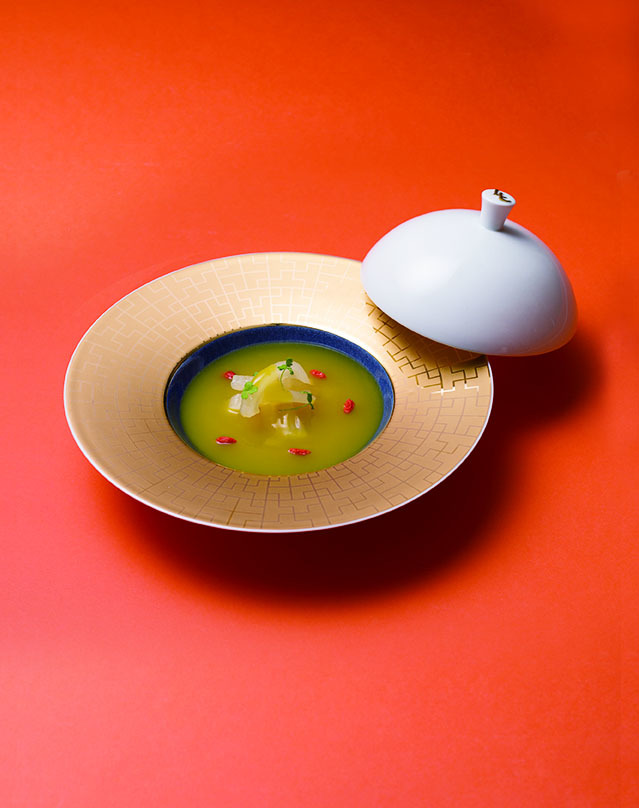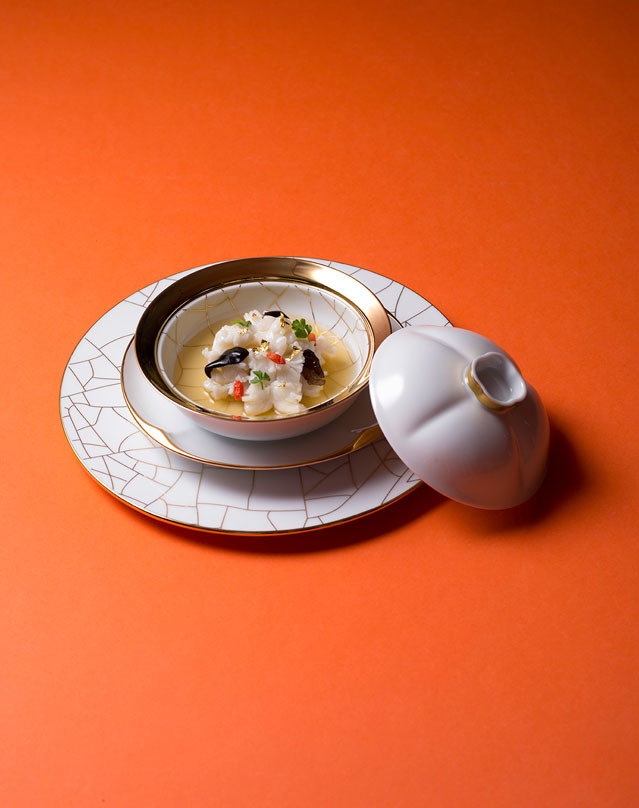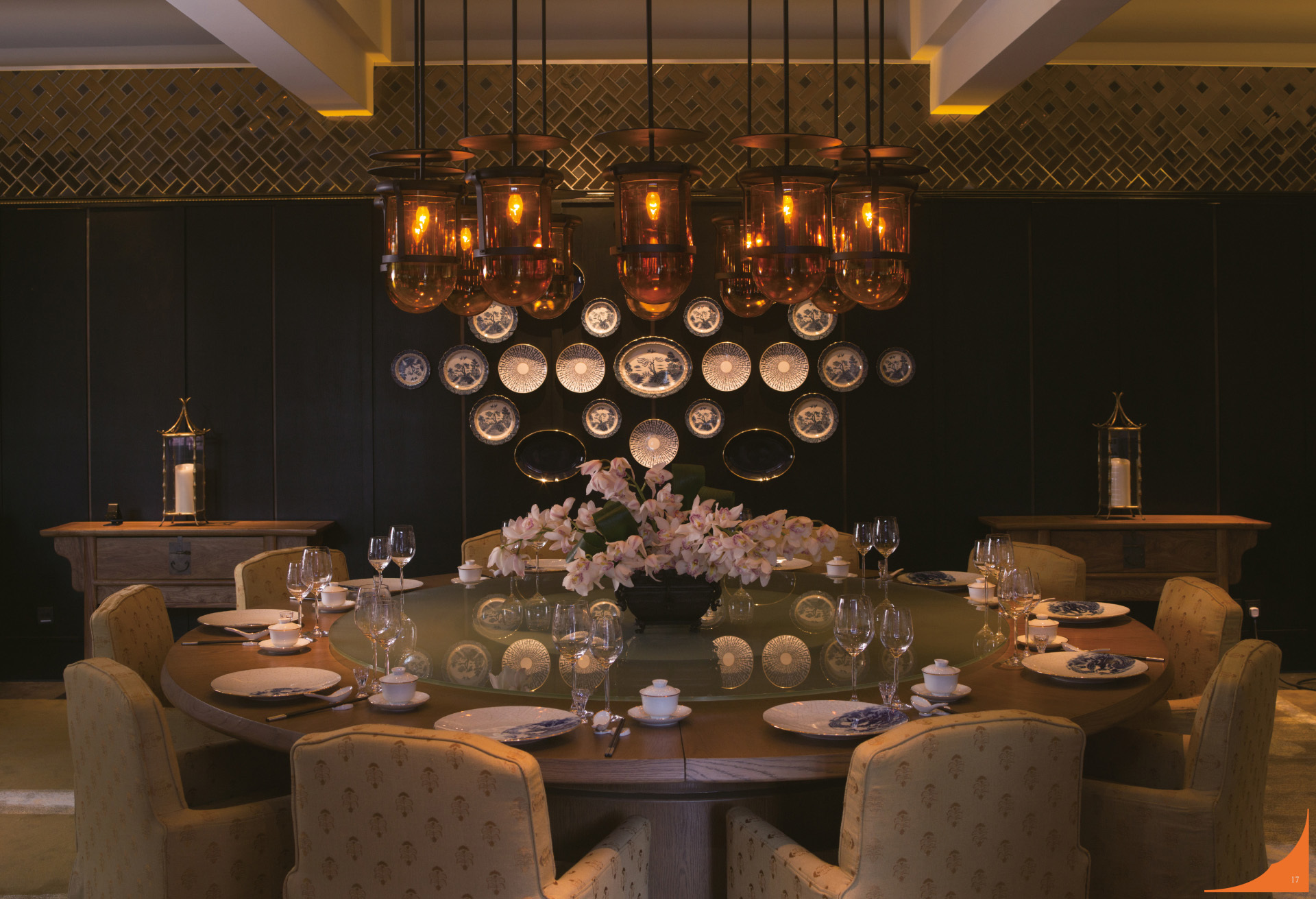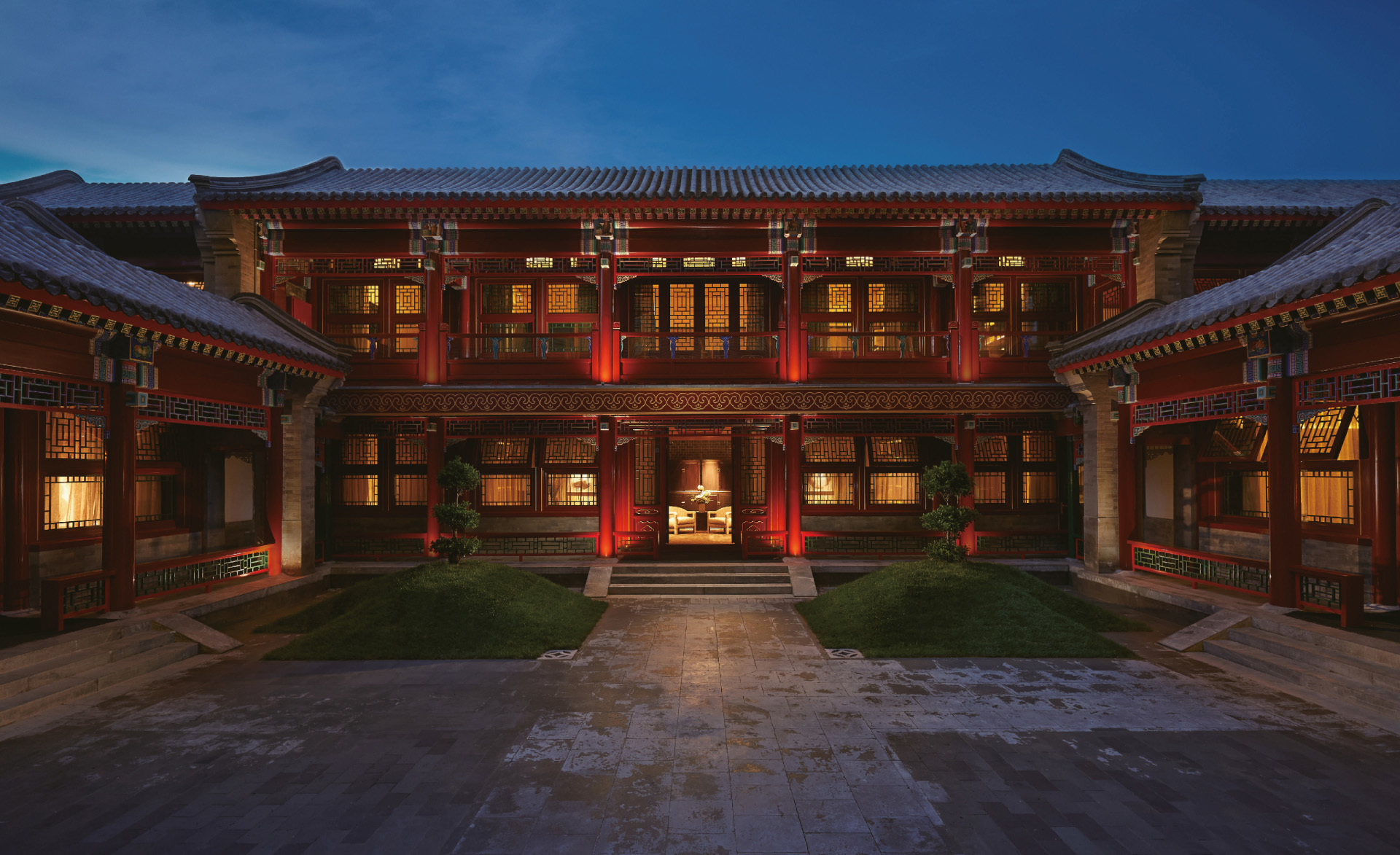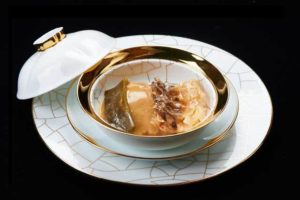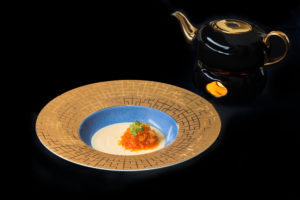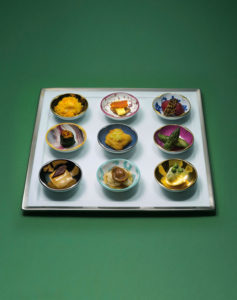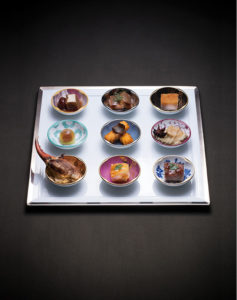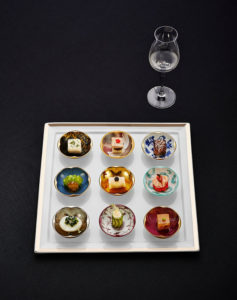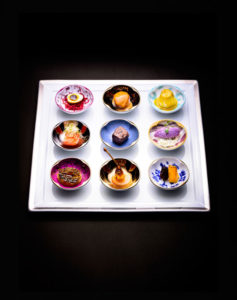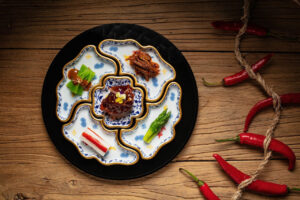

Waldorf Astoria / Beijing
The Waldorf Astoria brand is a legend in itself and is one of the much-sought-after destinations by countless celebrities and dignitaries.
Waldorf Astoria Beijing is one of only two in the Waldorf Astoria Collection in Asia.
Located in the former residence of Li Hongzhang in Wangfujing Jinyu Hutong, the majestic hotel rises 50 meters high with copper exterior that shines in the nation’s capital.
The Waldorf Astoria service is impeccable and is the hallmark of the brand.
The encounter of this capital city and Waldorf Astoria is akin to two old drama actors sharing the stage, interpreting a timeless classic.
Imperial Palace Jiu Gong Ge Appetizer
Imagine the ‘wow’ factor as this nine-in-one course is presented on nine colorful round dishes in three rows and columns on a platinum rim square platter representing the Jiu Gong Ge (Nine Halls Diagram) mentioned in ancient text from the “Book of Changes”.
The number ‘nine’ is regarded as the most auspicious number, a symbol of immense wealth and power. Deep fried meatballs, cucumber with ox tongue, jellyfish with vintage vinegar, bean sprouts and baby coriander roll, pear and hawthorn with Osmanthus syrup, Peking duck slice, mustard duck web, chicken with Chinese wine and traditional pork jelly with soybeans are the Beijing delicacies presented in this prelude to the gastronomic experience to come.
Selected for their visual and graphic effects, each plate of LEGLE FRANCE’s RUYI Jiu Gong Ge is of contrasting color with the delectable bites and represents a unique story depicting different culture and technique in China’s history, such as the Song Dynasty’s pea green clouds, the Yuan Dynasty’s underglaze red, and the Ming Dynasty’s Qinghua (blue and white porcelain), gold laced lacquer, and stone mosaic pattern from Suzhou, to symbolize power and prestige.
Braised Fish Maw with Chicken Soup
This bowl of soup is the result of many painstaking years of Tan cuisine dexterity.
The soup is clear like water yet rich in flavor. During late Qing dynasty, Tan cuisine was the cuisine enjoyed by officials.
After the founding of the China nation, Premier Zhou Enlai selected Tan cuisine to be served at state occasions.
Made from a combination of three types of free-range, mature chicken, sweet pumpkin juice is added to enhance its rich yet subtle flavor. Fish maw cooked to perfection is then added.
The essence of the chicken and the fish maw offers diners a delightful aftertaste.
Served on LEGLE Porcelain’s wide rim gold bowl with graphics reminiscent of Ming Dynasty furniture on the outside and indigo glaze porcelain inside, covered with a white soup lid with gold motif knob.
Tender Soft Lobster Ball with Secret Sauce
As four layers of cracked platinum gold on white tableware are presented, each diner captures a glimpse of the elegantly layered concentric arrangement. The LEGLE Porcelain’s RUYI collection is showcased here.
The bowl lid is of a chic cantaloupe design. Cantaloupe-shaped vessels were common utensils used in Song Dynasty and became popular during the Ming Dynasty.
Open the lid to reveal the lobster ball with golden yellow sauce with matching tableware. The lobster pieces are cooked in fermented rice wine, a cooking technique used often in Shangdong cuisine and now re -interpreted into Beijing cuisine. The lobster ball is fresh and succulent with a taste of fermented rice wine.
Let your tongue taste a dash of sweetness, saltiness and aromatic fermented rice wine.
The design of the platter is a contemporary take on Longquan patterns displays the craftsmanship of premium Longquan celadon. Diners get a taste of Song Dynasty Longquan Kiln fine porcelain.
Suckling Pig ‘Hutong Style’
Black on gold projects a solemn yet majestic air. Positioned at the right of this visual delight is the gold RUYI spoon.
To the left is the suckling pig regarded as one of the “eight gourmet treasures” in early Western Zhou.
It was regarded as an imperial dish when Emperor Kangxi came into power during the Qing Dynasty.
With influences from Manchuria dishes, the barbeque method became popular and the suckling pig also inspired and became an integral part of Cantonese cuisine.
The use of the furnace allows the meat to cook evenly and locks in the juices. Special sauce is then painted on the suckling pig and heated layer upon layer until it turns golden, complimenting well with the gold RUYI spoon and plate.
The cracked black pattern on the platter specially designed by LEGLE Porcelain for RUYI Gastronomy displays the craftsmanship of the premium Song Dynasty pane grain.
And presented on a tiny golden spoon inspired by Ferragamo’s first pair of high heels, the RUYI spoon gives the impression of a chic solid frame.
Its slightly narrow tip allows one to take in any food with feminine grace.
YOU MIGHT ALSO LIKE


